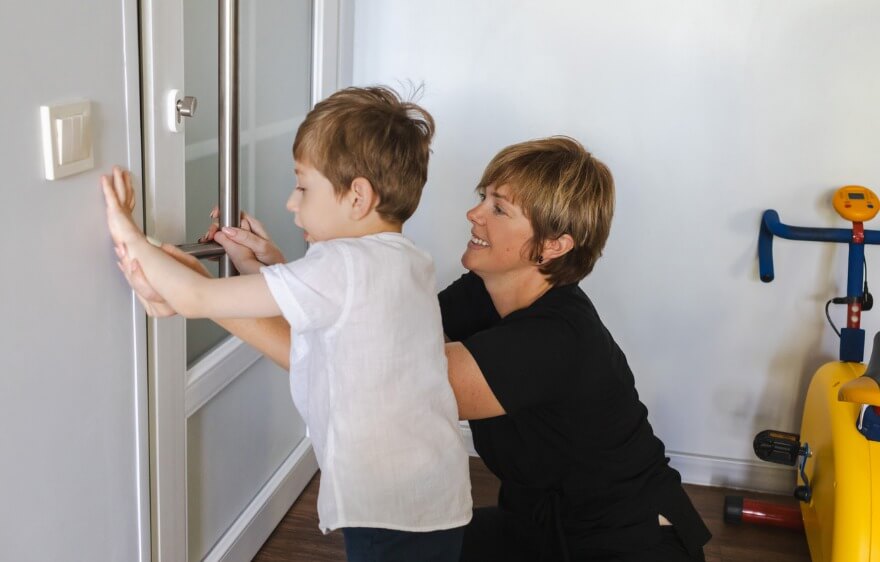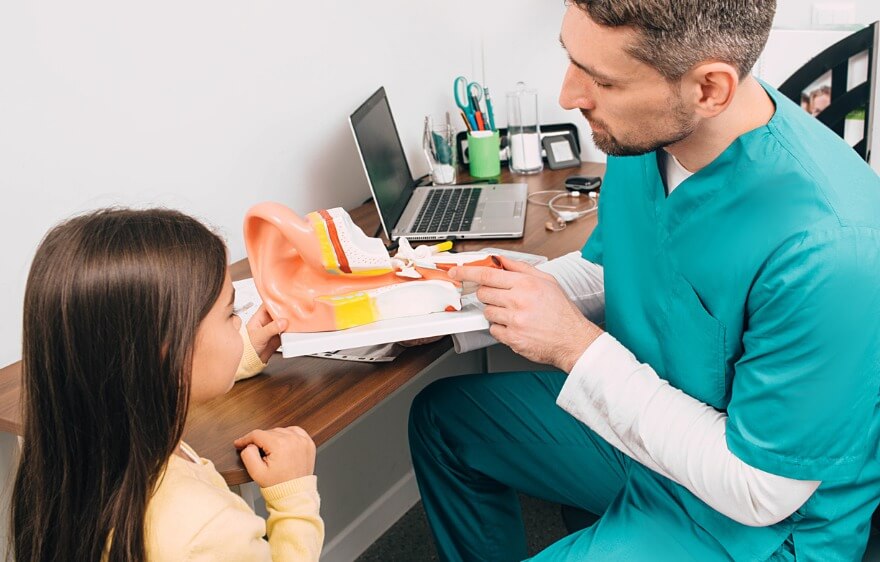For OTs of any experience level, writing a pediatric occupational therapy resume can be both exciting and nerve-wracking. Whether you’re a recent grad looking to dive into this rewarding field or a seasoned veteran transitioning to a new setting, your resume is an opportunity to showcase your skills and experience. A well-crafted resume can be the difference between landing an interview and getting lost in the slush pile.
Pediatric occupational therapists do so much to help children develop the skills they need for daily living and learning. By working with children who have physical, developmental, or emotional challenges, OTs help support fine motor skills, sensory processing, self-regulation, socialization, and more. Pediatrics is incredibly rewarding, but to break into the field or progress in your career, you’ll need a resume that stands out.
In this comprehensive overview, we’re walking you through the essentials of a standout Pediatric Occupational Therapy Resume. This includes tips on how to make it shine, as well as example resumes tailored to different backgrounds and settings such as clinic, school-based, and home health.
What to Include in Your Pediatric Occupational Therapy Resume
Before diving into the specifics, let’s first review the key sections your pediatric occupational therapy resume should include. Along with a targeted OT cover letter, a resume tells your professional story. By making it clear and compelling, employers can quickly see that you’re the right fit for the job. Here’s what you should include:
1. Contact Information
Your contact information should be easy to find, and it should be up to date. Include:
- Full Name
- Phone Number
- Email Address
- LinkedIn Profile (optional but recommended)
- Location (city and state or region)
2. Professional Summary or Objective
This section is your elevator pitch — a brief two-to-three-sentence summary of who you are and what you bring to the table. Tailor this section to the specific pediatric OT job you are applying for. Highlight your strengths, specializations, and any unique skills that set you apart. If you’re a recent grad, you may want to frame this more as an objective where you describe your goals and enthusiasm for pediatrics.
3. Education
Include your degree or degrees in Occupational Therapy, the name of the school, and your graduation date. If you’ve earned any relevant certifications, such as certifications in sensory integration therapy or neurodevelopmental disorders, be sure to list those here, too.
4. Licenses and Certifications
Occupational therapy requires specific licenses to practice in many states, so make sure to include:
- Your state licensure information, such as OTR/L
- Any relevant certifications or continuing education courses, such as pediatric-specific certifications or CPR/first aid
5. Relevant Experience
Your experience is where you’ll shine. Detail your previous work and internships related to pediatric occupational therapy. For each role, include:
- Job Title
- Employer/Organization Name
- Dates of Employment
- A few bullet points summarizing your responsibilities and achievements, focusing on your work with children and the specific skills you applied.
6. Skills
Pediatric occupational therapy is unique, so highlight the OT skills that are especially important in working with children. Examples include:
- Pediatric assessments
- Sensory processing interventions
- Fine and gross motor skill development
- Child development knowledge
- Communication and collaboration with families and multidisciplinary teams
7. Professional Development & Continuing Education
Given that pediatric OT is an ever-evolving field, showing that you stay current with the latest research, therapies, and techniques will impress potential employers. Include:
- Workshops, seminars, or courses you’ve completed
- Specialized pediatric training or certifications
- Conferences or symposiums you’ve attended
8. Volunteer Work (Optional)
If you’ve volunteered in pediatric settings or have additional experience working with children in non-OT contexts, include it here. This can add depth to your resume and show your passion for pediatrics.
Sample Pediatric Occupational Therapy Resumes
Below are sample pediatric occupational therapy resume options tailored to different experience levels and OT practice settings. These examples will help you understand how to present your qualifications effectively, whether you’re a recent graduate or an experienced OT transitioning to a new specialty.
Example 1: Pediatric Occupational Therapy Resume for a Recent Graduate
As a recent graduate, you may not have a long history of work experience, but there are still ways to showcase your potential and passion for pediatric OT. Here’s an example:
[Your Name], OTR/L
[Your Phone Number] | [Your Email Address]
[Your LinkedIn Page]
Professional Summary
Recent graduate with a Master’s in Occupational Therapy and a deep passion for pediatric care. Experienced in working with children with sensory processing disorders and developmental delays through clinical rotations and volunteer work. Eager to apply evidence-based practices and collaborate with interdisciplinary teams to improve child development and wellbeing.
Education
[Occupational Therapy Degree] | [School Name]
[Graduation Date]
Licenses and Certifications
- Licensed Occupational Therapist (OTR/L) – State of Example
- Pediatric Sensory Integration Certification (in progress)
- CPR and First Aid Certified
Relevant Experience
Pediatric OT Intern| [Clinic or Practice Name] | [Dates of Internship]
- Conducted occupational therapy assessments for children aged two to 10 with developmental delays, autism, and sensory processing issues
- Developed individualized treatment plans focusing on improving fine motor, self-regulation, and social skills
- Assisted in parent education sessions and collaborative team meetings to ensure a holistic approach to each child’s care
Skills
- Sensory integration therapy
- Pediatric evaluations
- Fine and gross motor skill development
- Play-based intervention strategies
- Collaboration with families and multidisciplinary teams
Example 2: Pediatric Occupational Therapy Resume for Clinic-Based Setting
In a clinic-based setting, you’ll likely deal with a broad range of pediatric clients, including those with sensory issues, physical disabilities, or cognitive delays. Here’s an example:
[Your Name], OTR/L
[Your Phone Number] | [Your Email Address]
[Your LinkedIn Page]
Professional Summary
Compassionate and experienced pediatric occupational therapist with more than five years of experience working in a busy pediatric clinic. Proven track record of improving children’s physical, cognitive, and social skills through individualized therapy plans. Strong communicator, skilled in collaborating with families and multidisciplinary teams to ensure comprehensive care for every child.
Education
[Occupational Therapy Degree] | [School Name]
[Graduation Date]
Licenses and Certifications
- Licensed Occupational Therapist (OTR/L) – State of Example
- Pediatric Sensory Integration Certification
- CPR and First Aid Certified
Experience
Pediatric Occupational Therapist | [Clinic Name] | [Start Date] – Present
- Conducted assessments and created therapy plans for children with developmental disabilities, sensory processing disorders, and ADHD
- Administered evidence-based therapy to enhance fine motor skills, coordination, and sensory processing abilities
- Provided ongoing parent coaching and guidance on at-home exercises and strategies for skill development
Skills
- Pediatric assessments and evaluations
- Sensory integration and motor skills therapy
- Parent coaching and education
- Multidisciplinary team collaboration
Example 3: Pediatric Occupational Therapy Resume for School-Based Setting
In a school-based setting, pediatric OTs help children with developmental disabilities navigate the academic environment. Here’s an example of how to tailor your resume for this setting:
[Your Name], OTR/L
[Your Phone Number] | [Your Email Address]
[Your LinkedIn Page]
Professional Summary
Skilled pediatric occupational therapist with a focus on school-based interventions for children with learning disabilities, autism spectrum disorder, and sensory processing disorders. Adept at creating engaging, individualized therapy sessions to help students succeed in the classroom environment.
Education
[Occupational Therapy Degree] | [School Name]
[Graduation Date]
Licenses and Certifications
- Licensed Occupational Therapist (OTR/L) – State of Example
- Pediatric Sensory Integration Certification
- CPR and First Aid Certified
Experience
School-Based Pediatric Occupational Therapist | [School Name] | [Start Date]– Present
- Collaborated with teachers, school counselors, and parents to design individualized education plans (IEPs) for students requiring occupational therapy
- Conducted sensory processing assessments, motor skill evaluations, and classroom adaptations
- Delivered direct therapy services to students in the classroom and small group settings
Skills
- IEP development and implementation
- Classroom adaptations and interventions
- Sensory processing strategies
- Collaboration with educational staff and parents
Example 4: Pediatric Occupational Therapy Resume for Home Health Setting
In a home health OT setting, you’ll likely work one-on-one with children and their families, helping them create a supportive environment. Here’s a sample resume for a home health pediatric OT:
[Your Name], OTR/L
[Your Phone Number] | [Your Email Address]
[Your LinkedIn Page]
Professional Summary
Dedicated pediatric occupational therapist with three years of experience providing home-based therapy services to children with autism, sensory processing disorders, and physical disabilities. Expert in adapting interventions to meet each child’s unique needs in a home environment and fostering strong relationships with families to support ongoing progress.
Education
[Occupational Therapy Degree] | [School Name]
[Graduation Date]
Licenses and Certifications
- Licensed Occupational Therapist (OTR/L) – State of Example
- Pediatric Sensory Integration Certification (in progress)
- CPR and First Aid Certified
Experience
Pediatric Occupational Therapist (Home Health) | [Employer Name] | [Start Date]– Present
- Provided home-based therapy for children with autism, ADHD, and physical disabilities
- Designed customized therapy plans to improve fine motor skills, daily living skills, and social-emotional development
- Worked closely with families to create home environments that supported therapeutic goals and progress
Skills
- Home-based therapy
- Individualized treatment plans
- Parent training and family support
- Fine motor and daily living skills development
Make Your Pediatric Occupational Therapy Resume Shine
Writing a standout pediatric occupational therapy resume can seem a little overwhelming at first, but by breaking it down into manageable sections, you can showcase your wealth of experience, skills, and passion for working with children. Whether you’re just starting your career or transitioning to a new setting, be sure to tailor your resume to highlight your strengths and make a lasting impression. With these examples, we hope you have a solid foundation to craft a pediatric occupational therapy resume that reflects your unique qualifications and readiness to make a positive impact in the lives of children. Happy job hunting!
If you’re looking for a pediatric home health occupational therapy career that offers great work-life balance, independence, and the ability to make a meaningful impact, Care Options for Kids has amazing opportunities for exceptional therapists. Our caring team is dedicated to delivering the skills, knowledge, and resources OTs need to succeed and help children and families thrive.
Join the Care Options for Kids Team!
Are you ready for meaningful work that comes with benefits and not burnout? Join the compassionate care team that helps children and families live their best lives. Our clinicians provide best-in-class pediatric nursing, therapy, and school-based services. We bring individualized care to children where they live, work, and play. We have opportunities in homes, schools, and clinics across the country.
Apply at Care Options for Kids now. We make it easy to start so you can make a difference as soon as possible.






